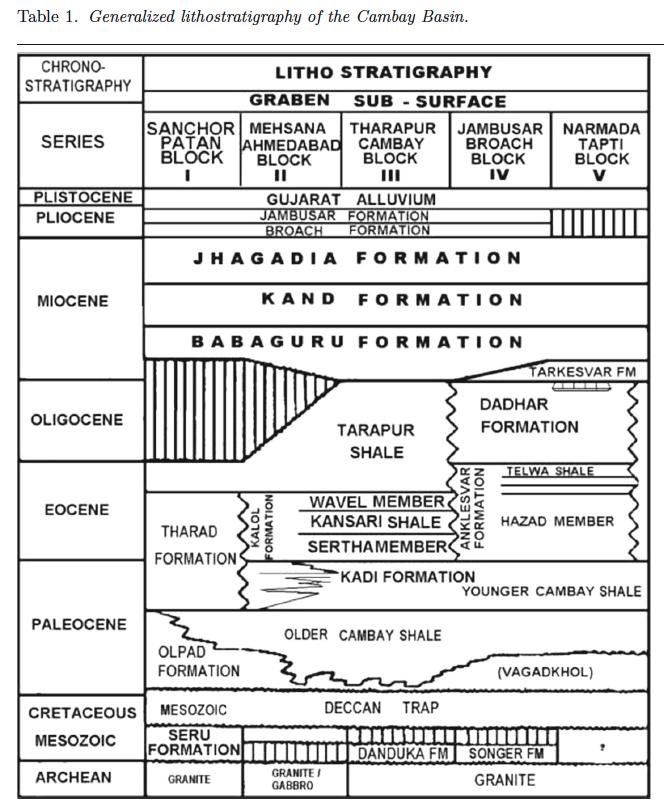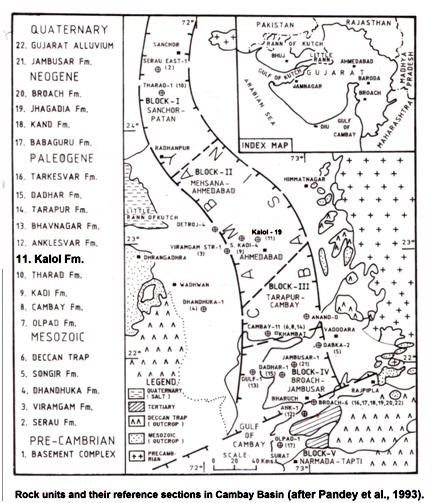Kalol Fm
Type Locality and Naming
SUBSURFACE: Well Kalol-19, (depth interval 1310-1595 m). It is of 285 m thickness. [Original Publication: Zubov, I.P., Nagolny, I.K., Zapivalov, N.P. and Chandra, P.K. (1966) Problem of correlation and distribution of hydrocarbon bearing horizons in the Eocene of Cambay Basin, ONGC Bull, vol 3 (2), pp. 9-13.]. Reference wells: i) North Kathana-1 (depth interval 1850 – 2060 m); ii) Vaso-1 (depth interval 1365 – 1560 m), In North Kathana-1 the thickness is 210 m while in Vaso-1 the thickness is 195 m.
Lithology and Thickness
Clayey sandstone. The type section comprises alternations of fine- to medium-grained sandstone, siltstone, grey to dark grey, silty and carbonaceous shale, sideritic claystone and coal. The Kalol Formation is subdivided into three units (Mehrotra and Ramakrishna, 1980). Maximum thickness is 250 m, varies from 100 m to 250 m.
[Figure 1: Rock units and their reference sections in Cambay Basin (after Pandey et al., 1993)]
[Figure 2: Generalized stratigraphy of the Cambay Basin. (from Jaiswal and Bhattacharya, 2018, J.EarthSyst.Sci., 127:65)]
Relationships and Distribution
Lower contact
The formation unconformable overlies the Kadi Fm.
Upper contact
Conformable with the Tarapur Fm.
Regional extent
The formation extends from north of Mahi river to Khari river in Block II and III in North Cambay Basin. It is absent in South Cambay Basin, south of Mahi river and west of Mehsana Horst and over the Horst.
GeoJSON
Fossils
The formation is poor in microfauna; Sudhakar and Basu (1973) have reported Truncorotaloides rohri, Nummulites sp., and Discocyclina from the upper part. Chilguembelina martini is also reported from the upper part. Discocyclina sp., Pellatispira sp., and Nummulites acutus were also reported (Pandey et al. 1993). The characteristic microfloral assemblage includes Polycolpites flavatus, Polycolpites granulatus, Psilodiporites hammenii, Proxapertites cursus, Palmaepollenites sp., and Homotryblium sp.
Age
Depositional setting
Additional Information

